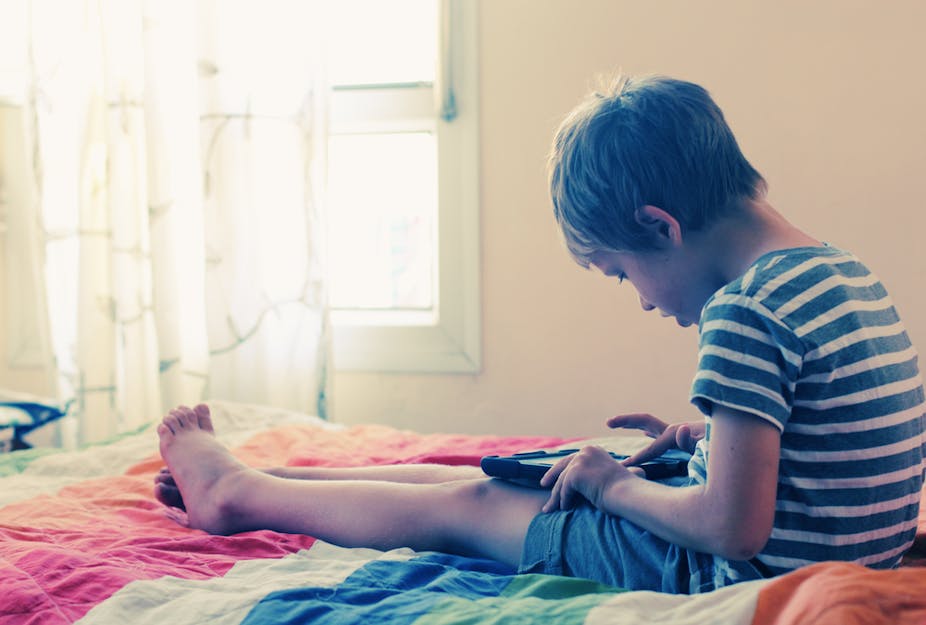Children with autism are often described as “visual learners” and said to “think in pictures”. Accordingly, teachers and therapists routinely prescribe picture-based communication systems in an effort to support their learning.
However, the findings of a study my colleagues and I published this week in the Journal of Autism and Developmental Disorders contradict this notion, casting doubt on a key rationale for routinely using these systems.
In the experiment, children with autism, children with developmental delay, and typically developing children were seated in front of an eye-tracking computer and a set of common objects.
A teacher appeared on the screen and gave instructions, such as “pick up the ball and put it in the box.” She gave half of the instructions using her speech alone, and half by pointing to pictures of the objects as she spoke.
The computer tracked the children’s eye movements while a video camera recorded their actions.
Unexpected patterns of looking and doing
The children with autism looked at the videos in the same way as the other children. They did not linger on the pictures longer than the other children, or avoid looking at the teacher’s face.
This means that if children with autism make greater use of visual information than do other children, it wasn’t apparent in this study in terms of observed differences in their pattern of attention to pictures and faces.
When it came to following the instructions, the children with developmental delay and typically developing children performed better when the pictures were used.
The children with autism did not. This was despite the children with autism being of similar age and having a similar language comprehension level to the children with developmental delay.
Ironically, it was the comparison groups of children who showed a visual learning style, not the children with autism.
Implications for practice
There has been an explosion of phone and tablet-based apps providing picture-based communication systems for children with autism, based on the belief that these are well suited to their visual learning advantage.

So should teachers and therapists stop using picture-based communication systems with children with autism?
The simple answer is no. There is growing evidence that picture-based communication systems can be effective for some children with autism, and there are several alternative explanations for why they may be effective. More attention needs to be given to these.
Alternative explanations
Picture-based communication systems may clarify the process of communication for children with autism.
When a child is taught to hand a picture of a drink to his mother to request a drink, for example, he can touch and see the picture in his hand. He then watches it as it moves through space into her hand. The exchange is physical and consistent, not fast and fleeting like spoken words.
As she recognises that he wants a drink and reacts, the power of communication is demonstrated by his attempt to communicate being rewarded. The use of pictures, in this case, is just one possible “ingredient” in the intervention.
Our study results suggest that teachers and therapists should consider the range of possible “ingredients” when deciding whether or not to prescribe picture-based communication systems to children with autism, rather than assuming he or she is a visual learner.
Individual differences
The study results also highlight the need to understand individual differences in autism.
In his original paper on autism in 1943, Austrian-American researcher Leo Kanner described 11 children who presented with a common set of pervasive behavioural traits, but he also described individual differences across the children.
Today, considerable research effort is being directed at explaining the genetic and behavioural differences observed in children with autism, as well as differences in response to treatment.
With this in mind, it should perhaps not come as a surprise that the children with autism in the present study did not present with a common and observable visual learning style. The challenge moving forward is to ensure that teachers and therapists acknowledge these individual differences when prescribing treatments to children with autism.

